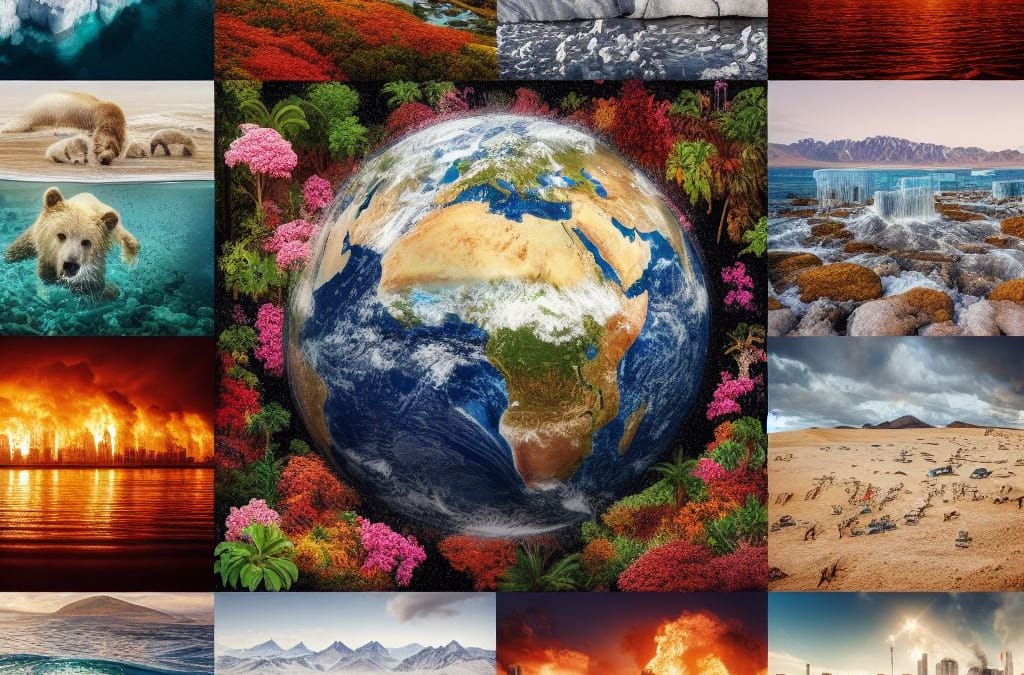The Earth’s climate is changing at an unprecedented rate, largely due to human activities. One of the most pressing concerns is the rising temperatures across the globe. Rising temperatures have far-reaching consequences that extend beyond melting ice caps and hotter summers. They have a profound impact on ecosystems, disrupting delicate balances, and threatening the survival of numerous species. In this blog post, we will explore the significant effects of rising temperatures on ecosystems and highlight the urgency to address this global issue.
Heat Stress and Habitat Loss:
Rising temperatures pose a direct threat to ecosystems by subjecting organisms to heat stress and triggering habitat loss. Many species are unable to adapt quickly enough to survive in increasingly warmer conditions, leading to reduced population sizes and, in some cases, extinction. Coral reefs, for example, are highly sensitive to changes in water temperature. As temperatures rise, coral bleaching becomes more common, disrupting the intricate symbiotic relationships that sustain these diverse marine habitats.
Disruption of Phenology:
Phenology refers to the timing of recurring biological events, such as migration, blooming, and hibernation. Rising temperatures can significantly impact phenology, causing mismatches between critical ecological events. For example, if the blooming of plants occurs earlier due to warmer springs, but the arrival of migratory birds remains unchanged, this can disrupt the availability of nectar and other food sources, leading to population declines for both plants and animals dependent on them.
Altered Distribution Patterns:
Species are adapted to specific temperature ranges and ecosystems, and rising temperatures can force them to shift their distribution patterns in search of suitable habitats. This can lead to the displacement of native species and the introduction of non-native species, disrupting established ecological interactions. Changes in distribution patterns can also impact predator-prey relationships, competition for resources, and the overall structure and functioning of ecosystems.
Increased risk of fires in rising temperatures:
Higher temperatures contribute to drier conditions, making ecosystems more vulnerable to wildfires. Warmer climates promote the spread of pests and invasive species that can destroy vegetation, increasing fuel load. This, combined with prolonged drought periods, increases the frequency and intensity of wildfires. These fires can have devastating effects on both terrestrial and forest ecosystems, resulting in the loss of biodiversity, habitat destruction, and soil erosion.
Changes in Species Interactions:
Rising temperatures can disrupt intricate ecological networks and relationships between different species. For example, pollinators, such as bees and butterflies, have evolved to synchronize their activity with the flowering of plants. However, as the timing of blooms is affected by rising temperatures, this can lead to a decline in pollinator populations, affecting plant reproduction and the overall health of ecosystems that rely on them.

Cascade Effects on Food Webs:
Ecosystems are complex networks of interconnected species, and changes in one component can have cascading effects on the entire food web. Rising temperatures can disrupt these delicate balances by altering species’ abundance, distribution, and behavior. For example, if a predator population declines due to the loss of their prey, it can affect the species they prey on, leading to unpredictable consequences for the entire ecosystem.
Conclusion:
Rising temperatures pose a significant threat to ecosystems worldwide. The consequences of these temperature changes extend far beyond climate-related issues and impact the intricate web of life on our planet. Urgent action is required to mitigate climate change and reduce the rate of temperature rise. This includes transitioning to renewable energy sources, implementing sustainable land-use practices, and promoting conservation efforts. Protecting and restoring ecosystems is essential for maintaining biodiversity, preserving ecological services, and safeguarding the future of all species, including our own. By acknowledging the impact of rising temperatures on ecosystems, we can strive for a more sustainable and resilient planet.


Recent Comments